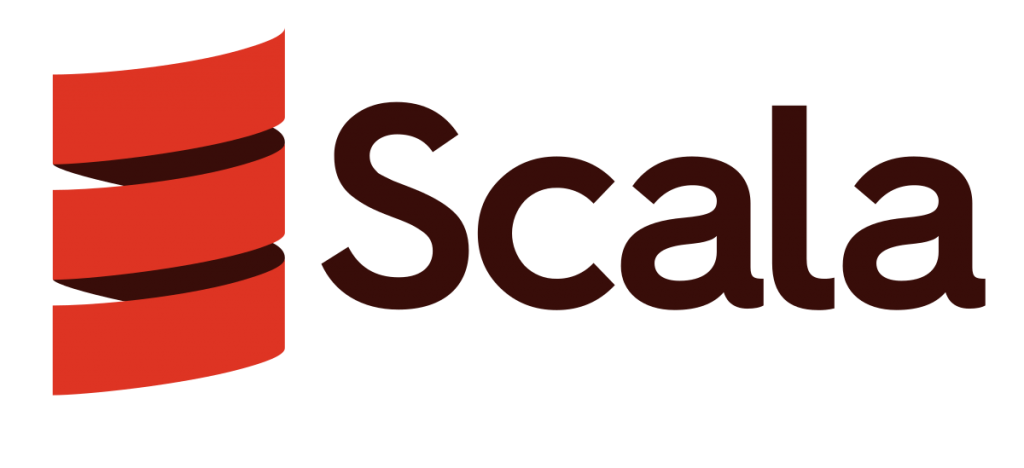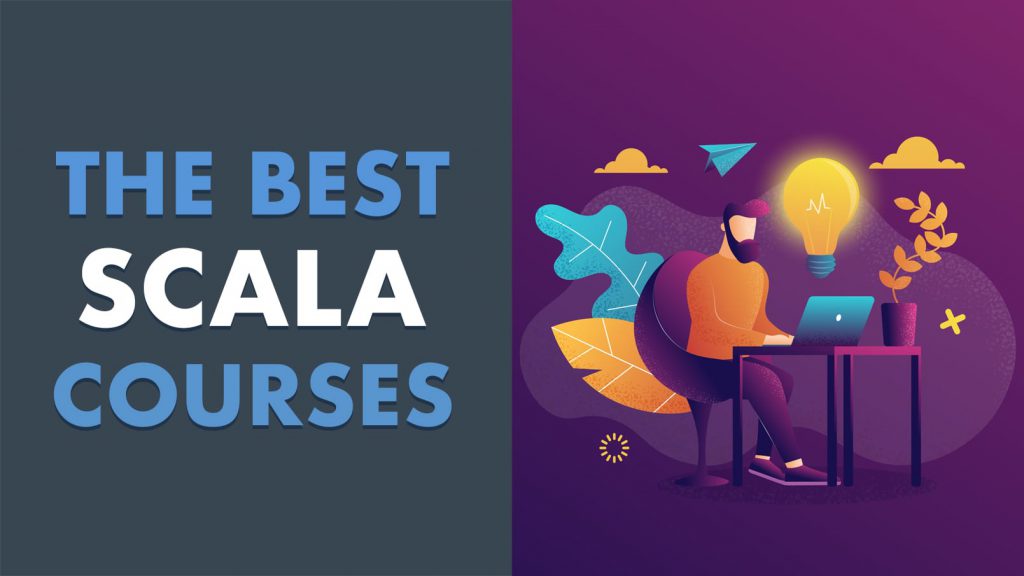Introduction to Scala programming language
Today we will discuss about the Scala programming language. Through this article you will learn about meaning of Scala programming language, its features, history, applications.
Scala is a programming language developed by Martin Odersky. It came into the market in 2003. Scala Stands for Scalable Language. Scala is a JAVA based programming Language which is much easier to code than Java. So is treated as future replacement of Java in enterprise software development.

What is Scala?
A general-purpose programming language and is an acronym from Scalable Language. It provides supports for both functional programming and object-oriented programming language.
What is the Prime Aim of Scala Programming Language?
Improve Java and call Java methods, inherit from Java classes, and more.
What is Scala Used for?
Strong static systems, machine learning, and data science! You can use Scala in content management systems, finance-related applications, and distributed applications.
Key Highlights of Scala:
Legible and compact code.
Solid Type System: Helps to eliminate errors and tells which algorithms to use on the data.
Java Interoperability: Scala interacts with Java and its libraries as part of the same system.
Modern Programming Benefits: Helps to carry out multiple calculations together. Include processes like asynchronous and parallel.
Features of Scala programming language
Scala programming language is modern pure object oriented programming language and there are various features of Scala which makes it the most demanded programming language. So, let’s discuss in detail the main features of Scala programming language.
- General purpose
Scala programming language is a multi purpose or general purpose programming language which means it can be used by programmers to develop different types of applications and programs. - Object oriented programming
Scala programming language is considered as a pure object oriented programming language and it follows all the concepts of object oriented programming approach like class, inheritance, abstraction, polymorphism, and encapsulation, etc. - Typing disciplines
Scala programming language support different types of typing disciplines like static, strong, structured and inferred. - Platform
Programmers can run Scala programming languages on Java Virtual Machine (JVM) and other platforms. - Interoperability
Scala programming language also provides the feature of interoperability. With this, Scala can use the Java codes and similarly Java can use the codes of Scala programming language. - Multi paradigm
Scala programming language support multi paradigm like imperative, functional, concurrent and Object oriented. - Extensible
Scala programming language is a extensible programming language.
5 Best Online Courses for Scala Developers to Join in 2022

Here is the list of the best online courses to learn Scala and Functional Programming. The list contains both beginners and intermediate-level Scala courses. It also has the best courses from Udemy, Coursera, Pluralsight, and Educative, a couple of best websites to learn online.
- Scala & Functional Programming for Beginners [Udemy]
For anyone having some programming experience in languages such as python or C++ and you want to scale your knowledge to earn Scala then this class is the right for you since it will teach you how to use this language in some fields and leverage its power.
You will learn in this course:
Understanding how Scala works.
Developing powerful tools.
Working with the files system.
Starting with the basics of this language such as expressions and functions then moving to the object-oriented programming and inheritance as well as anonymous classes and objects and finally working with small file systems such as creating and removing files and many more commands.
- Scala: The Big Picture [Pluralsight]
If you want to learn the Scala functional programming language in a pretty short amount of time and as a beginner with no prior experience in this technology then you can enroll in this Pluralsight course that covers all this language and much more.
Starting first with the basics of this functional language that it will stick with you throughout the course such as variables and values then moving to some advanced topic such as anonymous function classes as well as collections and patterns and finally, you will see how to do a special kind of programming called concurrent programming using Scala.
Here are things you will learn in this course:
The basics of Scala language.
The pattern matching in Scala.
The concurrent programming in Scala.
- Functional Programming in Scala Specialization [Coursera]
The best and most comprehensive specialization on Coursera teaching you the Scala programming language from scratch and write programs very effectively with some frameworks such as Apache Spark and other technologies and more.
Starting with the basics as usual like the variables as well as the data types and loops and more then you will apply what you have learned in Scala to build larger applications so you will get hands-on experience throughout the course and finally apply all of this in the Big data industry.
You will learn in this course:
The basics of this language.
Some technologies such as Spark.
Using Scala in Big data.
Overall a comprehensive and well-structured course to learn Scala and Functional Programming.
- Advanced Scala and Functional Programming [Udemy]
The last course suggestion in this article is for advanced people in Scala who have some experience in the basics or maybe intermediate users and want to expand their knowledge in this functional programming language and be in the top developers level.
You will learn in this course:
Advanced programming with Scala.
Hight-Level functional programming.
The Scala tools.
Starting with the advanced pattern matching then moving to some high-level functional programming as well as the lazy evaluation with some exercises to get some experience then you will move to the functional concurrent programming such as parallel programming and JVM thread.
- Scala and Spark for Big Data and ML [Udemy]
If you are interested to learn the Big data topic as well as machine learning using the modern programming language called Scala then this course is the right for you since you learn these technologies from a beginner to an advanced level in one course.
You will learn in this course:
How to code using Scala.
Scala for Big data.
Scala for machine learning.
You will start by installing the environment of the scala in different machines such as Linux and so on then learn how to code using Scala as a beginner such as variables and data types with some projects you will make in this course and finally jump to using this language to create machine learning models.

Scala interview questions
1.What is the difference between unapply and apply, when would you use them?
unapply is a method that needs to be implemented by an object in order for it to be an extractor. Extractors are used in pattern matching to access an object constructor parameters. It’s the opposite of a constructor.
The apply method is a special method that allows you to write someObject(params) instead of someObject.apply(params). This usage is common in case classes, which contain a companion object with the apply method that allows the nice syntax to instantiate a new object without the new keyword.
2.What is a companion object?
If an object has the same name that a class, the object is called a companion object. A companion object has access to methods of private visibility of the class, and the class also has access to private methods of the object. Doing the comparison with Java, companion objects hold the “static methods” of a class.
Note that the companion object has to be defined in the same source file that the class.
class MyClass(number: Int, text: String) {
private val classSecret = 42
def x = MyClass.objectSecret + “?” // MyClass.objectSecret is accessible because it’s inside the class. External classes/objects can’t access it
}
object MyClass { // it’s a companion object because it has the same name
private val objectSecret = “42”
def y(arg: MyClass) = arg.classSecret -1 // arg.classSecret is accessible because it’s inside the companion object
}
MyClass.objectSecret // won’t compile
MyClass.classSecret // won’t compile
new MyClass(-1, “random”).objectSecret // won’t compile
new MyClass(-1, “random”).classSecret // won’t compile
3.What is the difference between the following terms and types in Scala: Nil, Null, None, Nothing?
The None is the empty representation of the Option monad (see answer #11).
Null is a Scala trait, where null is its only instance. The null value comes from Java and it’s an instance of any object, i.e., it is a subtype of all reference types, but not of value types. It exists so that reference types can be assigned null and value types (like Int or Long) can’t.
Nothing is another Scala trait. It’s a subtype of any other type, and it has no subtypes. It exists due to the complex type system Scala has. It has zero instances. It’s the return type of a method that never returns normally, for instance, a method that always throws an exception. The reason Scala has a bottom type is tied to its ability to express variance in type parameters..
Finally, Nil represents an empty List of anything of size zero. Nil is of type List[Nothing].
All these types can create a sense of emptiness right? Here’s a little help understanding emptiness in Scala.
Scala type hierarchy.
4. What is the difference between a trait and an abstract class?
The first difference is that a class can only extend one other class, but an unlimited number of traits.
While traits only support type parameters, abstract classes can have constructor parameters.
Also, abstract classes are interoperable with Java, while traits are only interoperable with Java if they do not contain any implementation.
5. Explain the implicit parameter precedence.
Implicit parameters can lead to unexpected behavior if one is not aware of the precedence when looking up.
So, what’s the order the compiler will look up for implicits?
- implicits declared locally
- imported implicits
- outer scope (implicits declared in the class are considered outer scope in a class method for instance)
- inheritance
- package object
- implicit scope like companion objects
What Companies Use Scala?
- Apple
- Sony
- Netflix
- Tumblr
- Foursquare
- The Guardian
- AirBnB
- Precog
- Klout
- Meetup.com
- Remember the Milk
- The Swiss Bank UBS
- Amazon
- IBM
- Autodesk
- NASA
- Xerox
Scala Tutorial – Conclusion
So, in this Scala Tutorial, we have discussed Scala for beginners, what is Scala programming, Scala for beginners, history of Scala, Features of Scala, Frameworks of Scala, Applications of Scala, Companies that use Scala, and technologies that are built on Scala.
This is just the beginning.
- Mastering Qualitative Research: The Role of Focus Groups in Data Collection - July 11, 2024
- What is robots ops? - July 10, 2024
- 5 Effective Online Learning Strategies for DevOps Professionals - July 4, 2024

